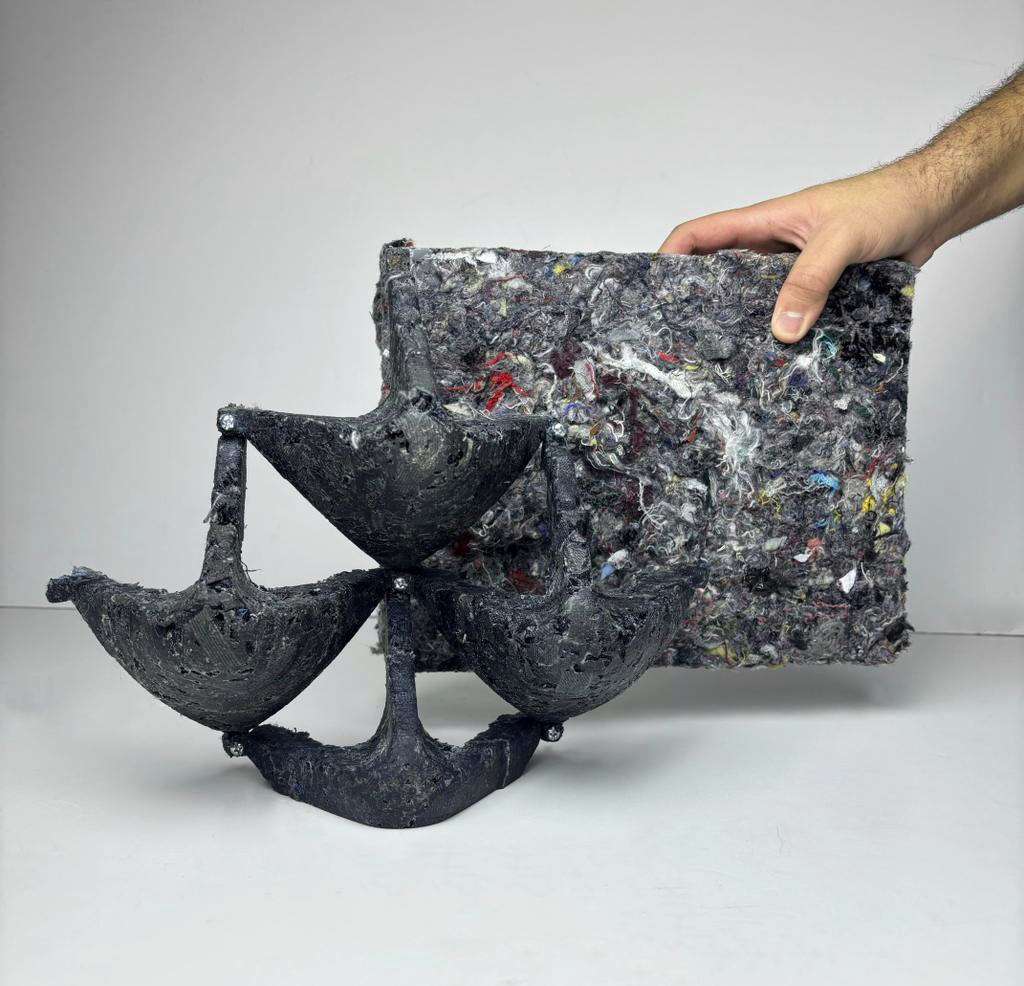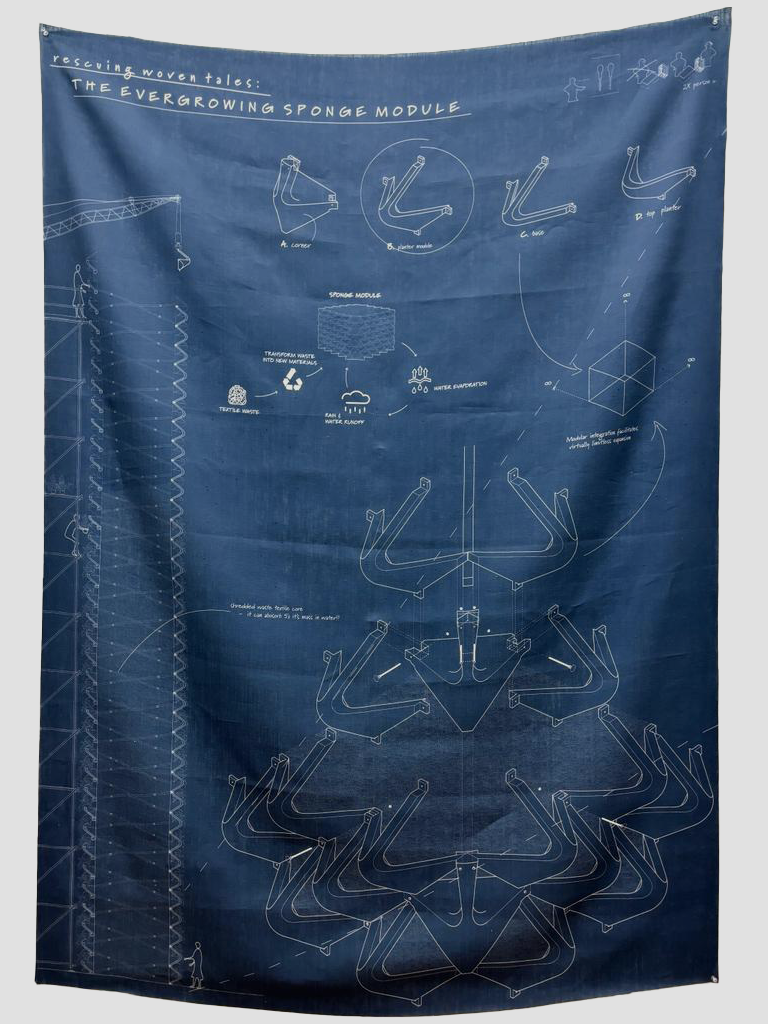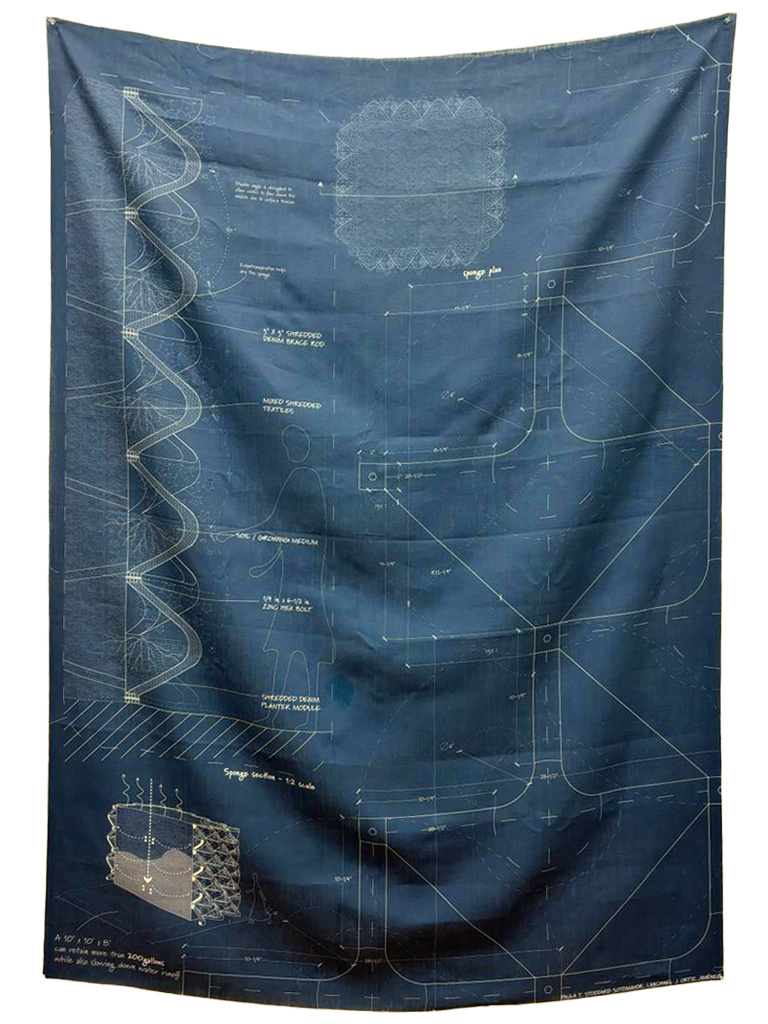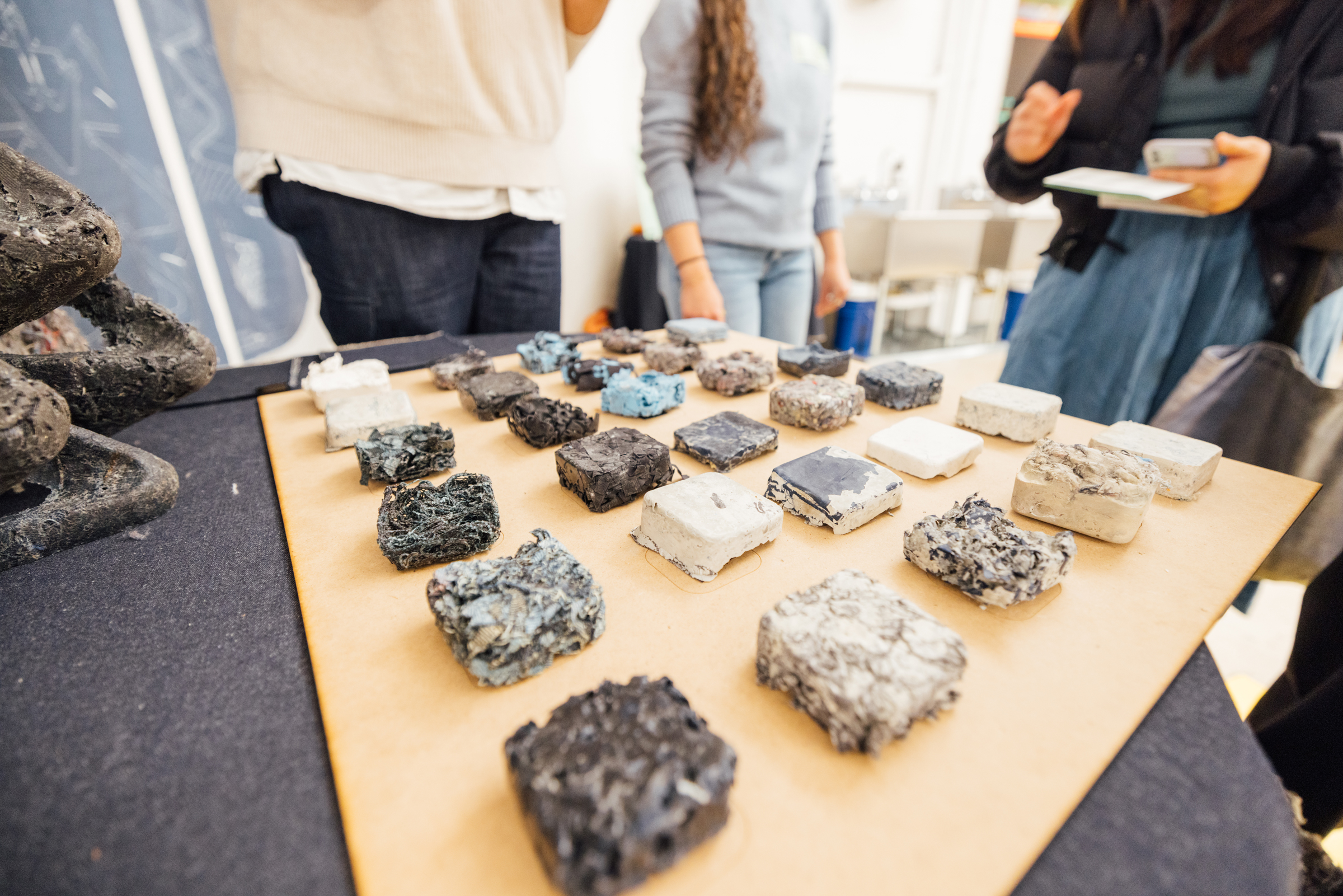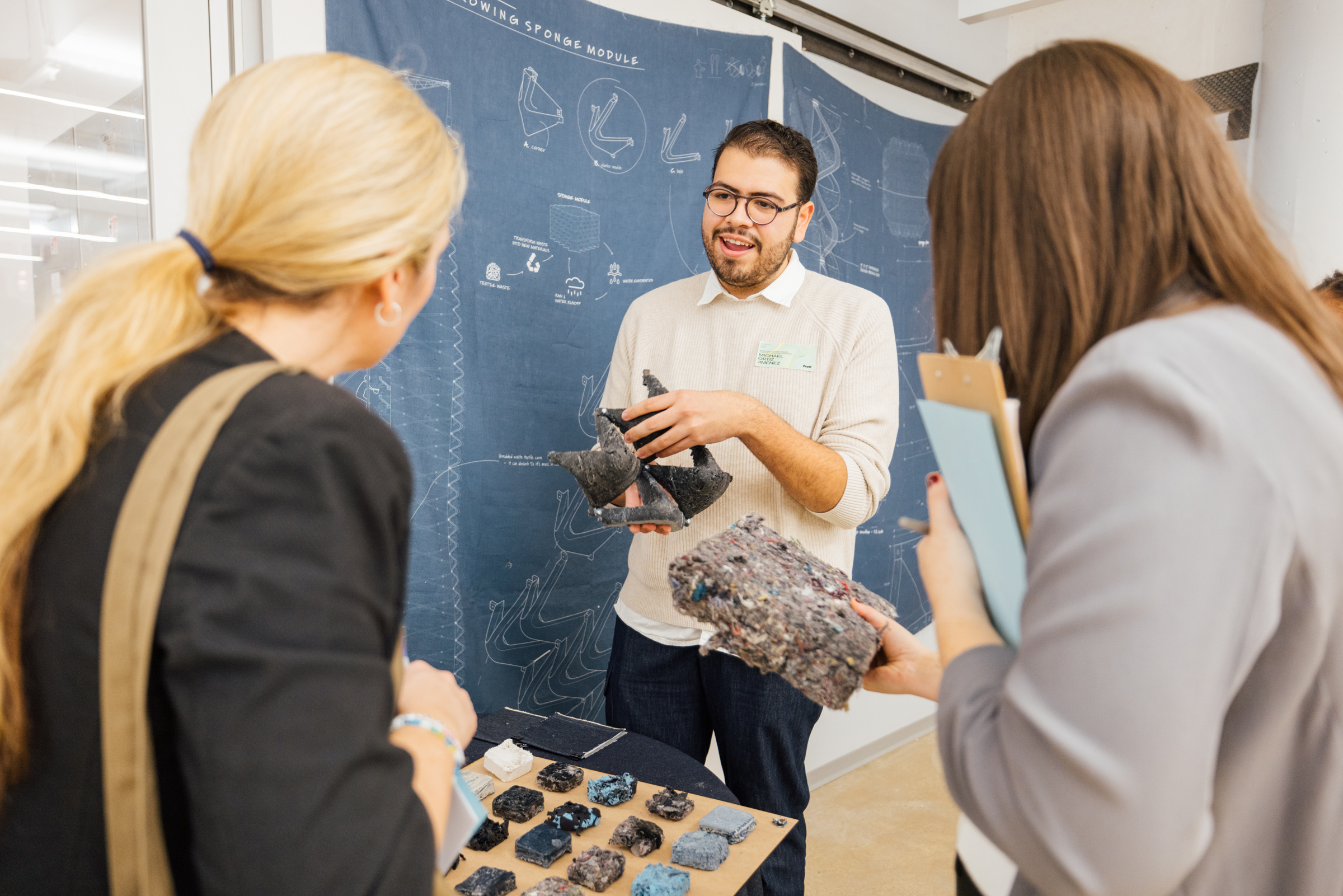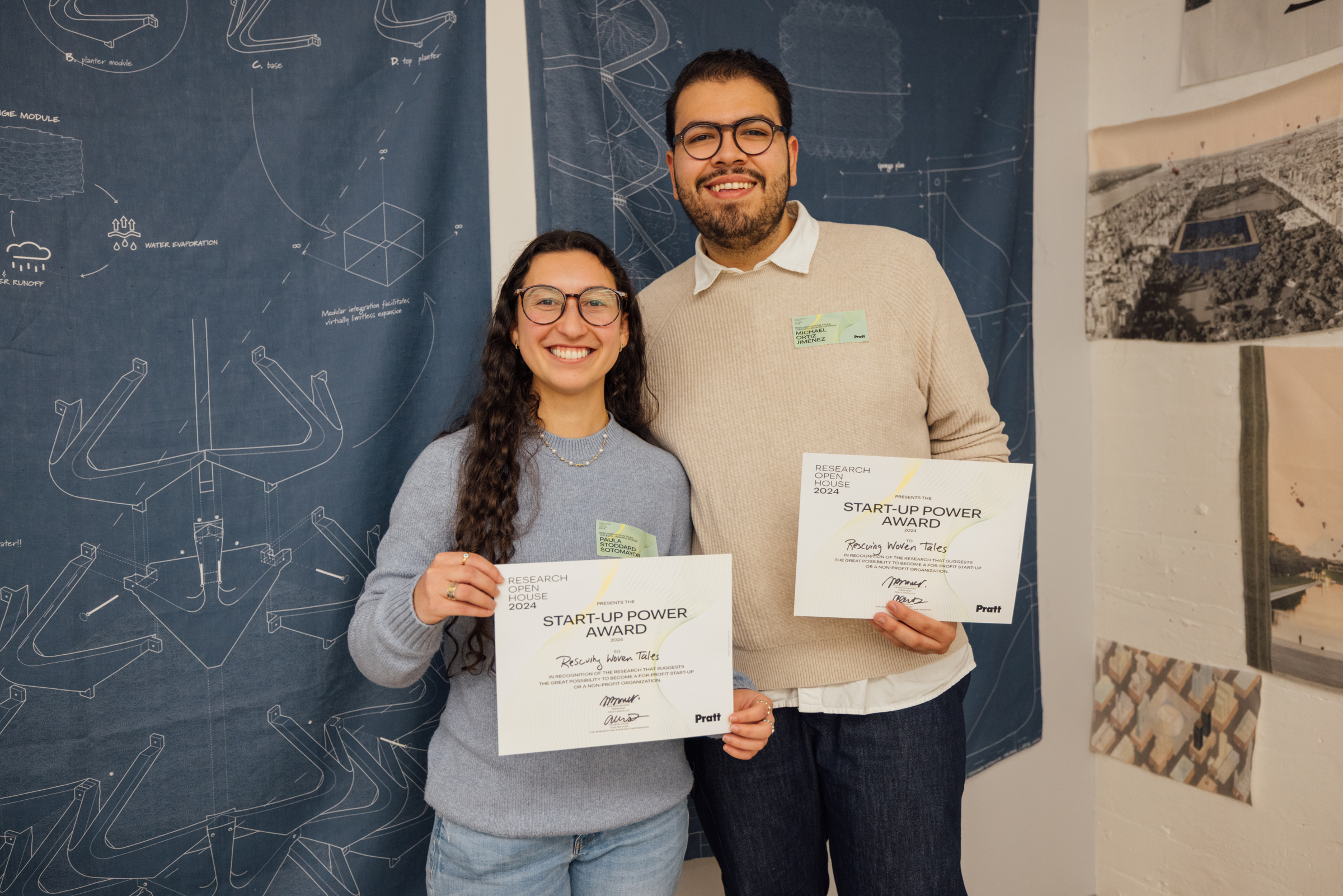Rescuing Woven Tales: The Ever Growing Sponge
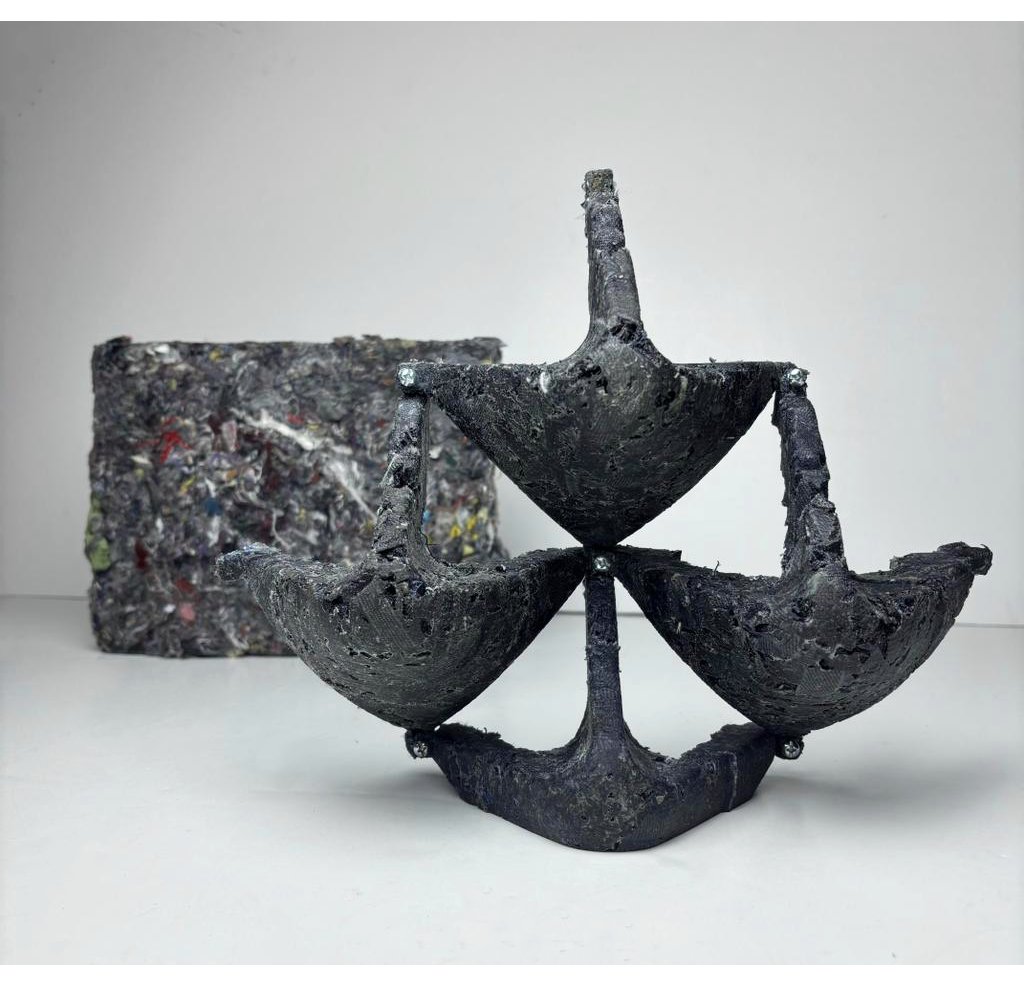
Michael Ortiz Jiménez and Paula Stoddard Sotomayor
School of Architecture
Start-Up Power Award Winner
In a world grappling with the escalating crisis of textile waste, our research endeavors to unveil the untapped potential within this discarded resource, shedding light on a transformative approach to address the environmental repercussions of our consumption patterns. The journey of textiles, from fabrication to disposal, is rife with a complex narrative that weaves through landscapes scarred by valleys of discarded garments.
Our research aims to reposition textile waste as a valuable asset in the architectural realm, transcending its role as an environmental hazard to become a sustainable solution for construction. We embarked on this exploration by meticulously studying various textile types, understanding their compositions, and tracing the intricate chain of production that culminates in vast textile wastelands. From natural fibers to synthetic counterparts, we delved into the depths of textile characteristics, paving the way for a comprehensive understanding of this often-overlooked resource.
Following an extensive examination of textiles and their diverse compositions, our research journey led us to the realm of integration, where we explored the synergy of textiles with various binding agents. We delved into the fusion of fabrics with a spectrum of binding materials, ranging from conventional concrete to PVA glue, and even experimented without using any binding agents at all. As we interwove these elements, a meticulous record of our observations and insights was crafted, resulting in the development of an attributes matrix. This matrix serves as a visual representation of the myriad properties and potentials unveiled throughout our experimentation. It encapsulates the diverse characteristics and possibilities inherent in the amalgamation of textiles and binding agents, providing a structured framework for the systematic assessment of the multifaceted nature of our approach.
Our exploration took an unexpected turn as we explored an attribute inherent in most textiles: their remarkable capacity to retain water through capillary action. This revelation became a catalyst for an innovative concept, transforming denim waste into modular elements that not only serve as structural components but also act as eco-responsive planters with the potential to revolutionize our approach to sustainable urban landscaping.
During our extensive experimentation, we observed the capillary action of textiles, a quality that led us to envision denim waste as modular elements designed to act as both planters and water absorbers. These modules are intended to be filled with a blend of shredded textiles, forming a responsive sponge capable of absorbing and slowing down water runoff during heavy rains. This dual-purpose innovation serves to protect our built environment from the adverse impacts of flooding by mitigating stress on sewage systems.
Our research uncovered that the shredded mixed textile core within these modules possesses an impressive water absorption capability, absorbing approximately five times its mass; while also working as a growing medium. Inspired by this finding, we designed the modules to resemble planters, not only maximizing their aesthetic appeal but also harnessing their functionality in sustainable urban landscaping.
One of the key features of our modular design is its stackability, driven by a thoughtful, yet simple addition system. This unique design allows for endless stacking possibilities, fostering adaptability and scalability in various urban environments. As a result, our textile waste modules can seamlessly integrate into the urban landscape, serving both as green spaces and as resilient elements that actively contribute to water management.
In essence, our research extends beyond the realm of architectural innovation; it is a call to reimagine urban landscapes as interconnected ecosystems, where textile waste finds a purpose in mitigating environmental challenges. The modular elements, combining structural strength with water-retaining capabilities, embody a sustainable solution that aligns with the principles of circular economy, resilience, and responsible urban planning.
By introducing this groundbreaking concept, we aspire to not only repurpose textile waste but also contribute to the creation of urban environments that harmonize with nature, addressing the pressing challenges of flooding, water management, and sustainable landscaping. Our vision is one where textile waste, once destined for landfills, becomes a cornerstone of resilient and sustainable design, fostering a more eco-conscious and adaptive future.
